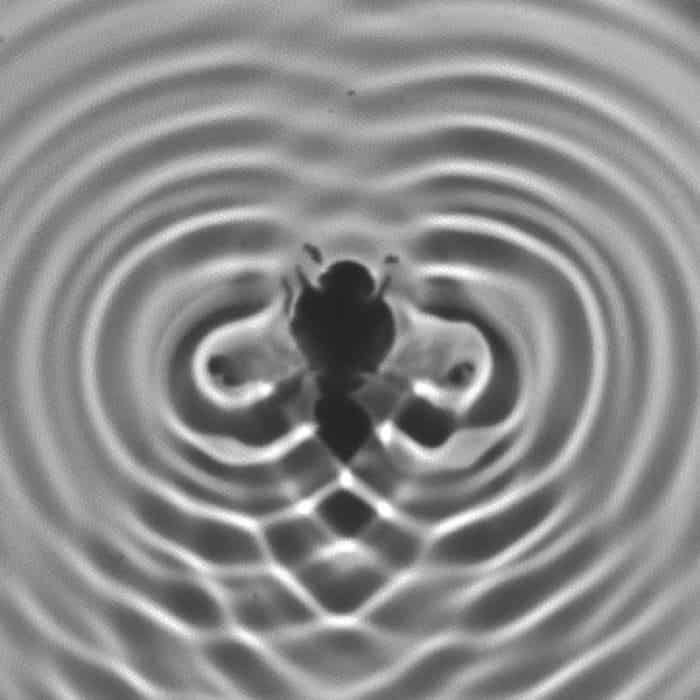A thirsty honeybee can sometimes get its wings wet when it ventures too close to a pond. With its wings soaked, the insect is no longer able to fly and free itself from the water’s surface. But all is not lost for the honeybee. According to a surprising new study, honeybees are able to astonishingly use their wings as hydrofoils. They are capable of essentially surfing all the way to shore, even if that means slowly covering a distance thousands of times greater than their body size.

Chris Roh, an engineer at Caltech’s Graduate Aerospace Laboratories, first noticed this behavior while observing a bee that was stuck in the water of a still pond on the university’s campus. He was stunned to see that the bee’s beating wings generated tiny waves across the pond’s surface. Was the honeybee trying to escape? And, if so, could it ever be successful?
To find out, Roh enlisted the help fellow colleague Morteza Gharib, who is an expert in biomechanical engineering, and studied 33 bees collected from a garden in Pasadena, California, in a controlled environment.
The bees were gently released from plastic tubes, from where they directly fell into about two inches of water. High-speed cameras recorded the insects as they began to struggle, measuring the strength and frequency of their wingbeats, as well as the waves they produced.
Turns out, the bees could escape.
The pair of researchers found that the bees fluttered with a slower and shallower pace than they use for flying. Their wingbeats created asymmetric wave patterns that differed in the front and rear of the insects, pushing them forward at a rate of 3 bee body lengths per second. Every thrust generates ∼20-μN (20 millionths of a Newton) of force.
“The motion of the bee’s wings creates a wave that its body is able to ride forward,” Gharib says. “It hydrofoils, or surfs, toward safety.”
Although bees aren’t the fastest insects in the water, by a large margin, this was the first time that scientists have observed an insect using hydrofoiling. It may represent a unique adaptation to bees.
Unfortunately, the insects can’t keep surfing forever. Experiments suggest that honeybees can only sustain the motion for no more than 10 minutes, after which they show signs of muscle fatigue.
Roh and Gharib claim that these insights might one day be employed to design a vehicle capable of both aerial and aquatic propulsion.
The findings appeared in the Proceedings of the National Academy of Sciences.






